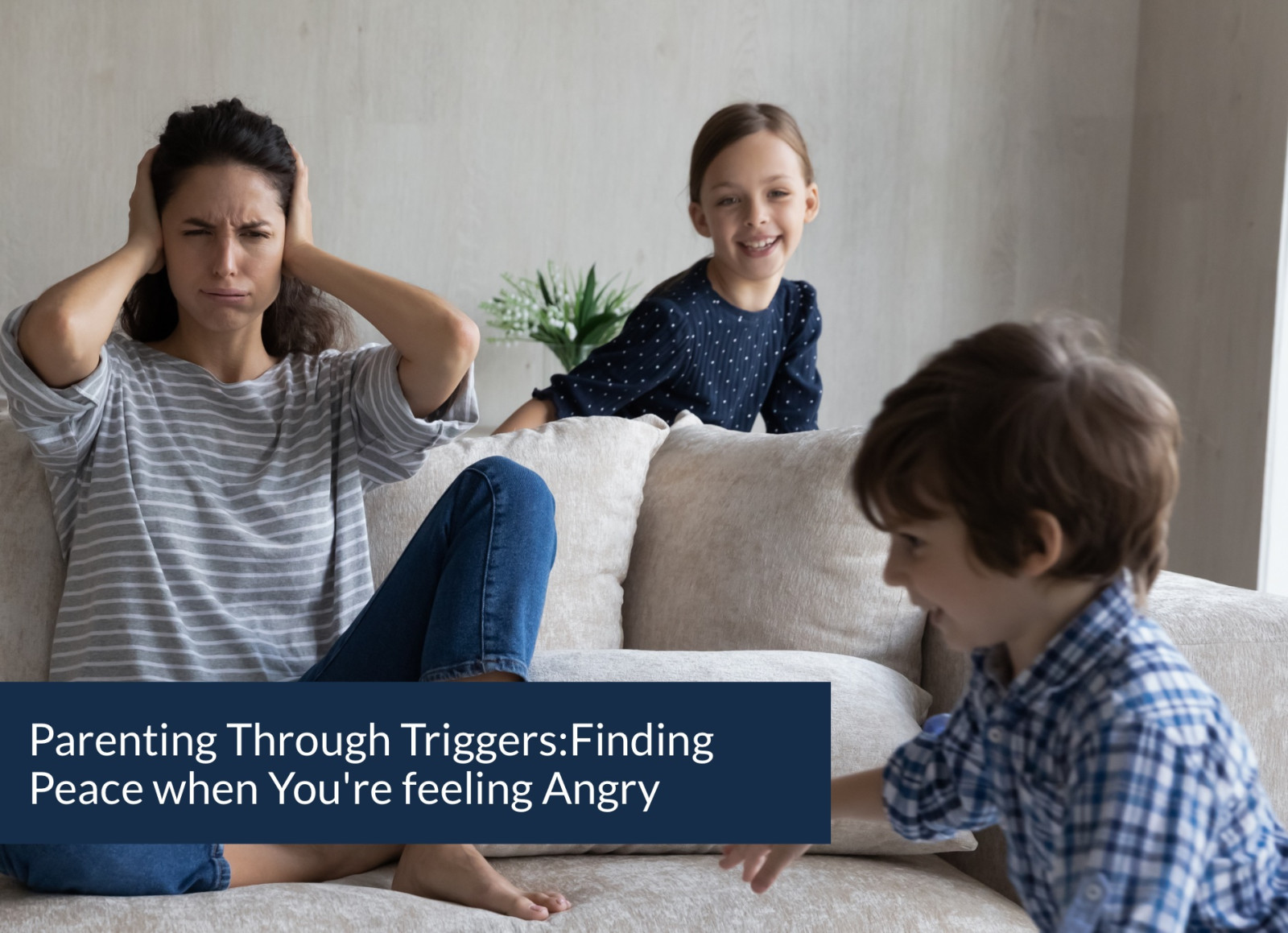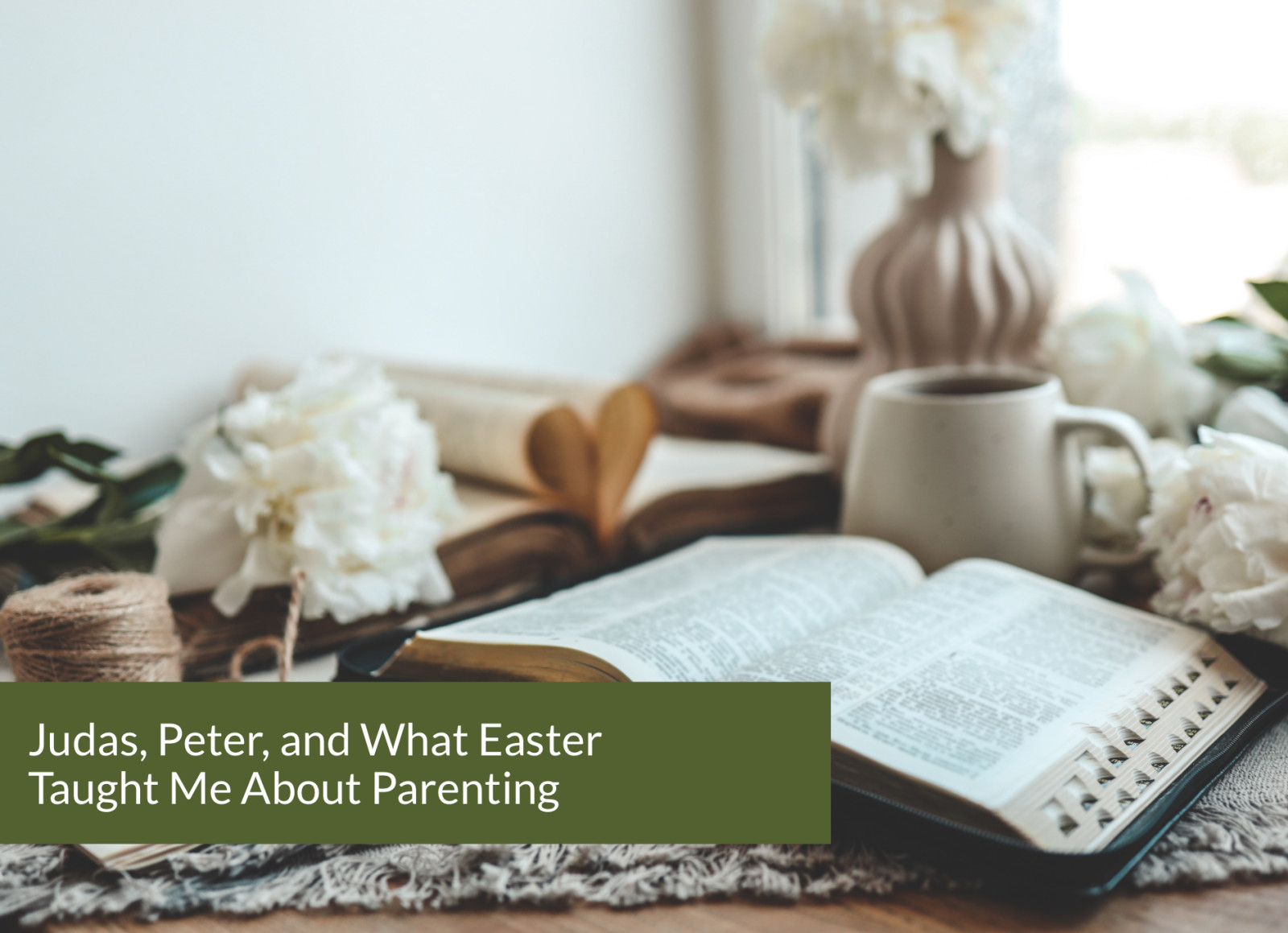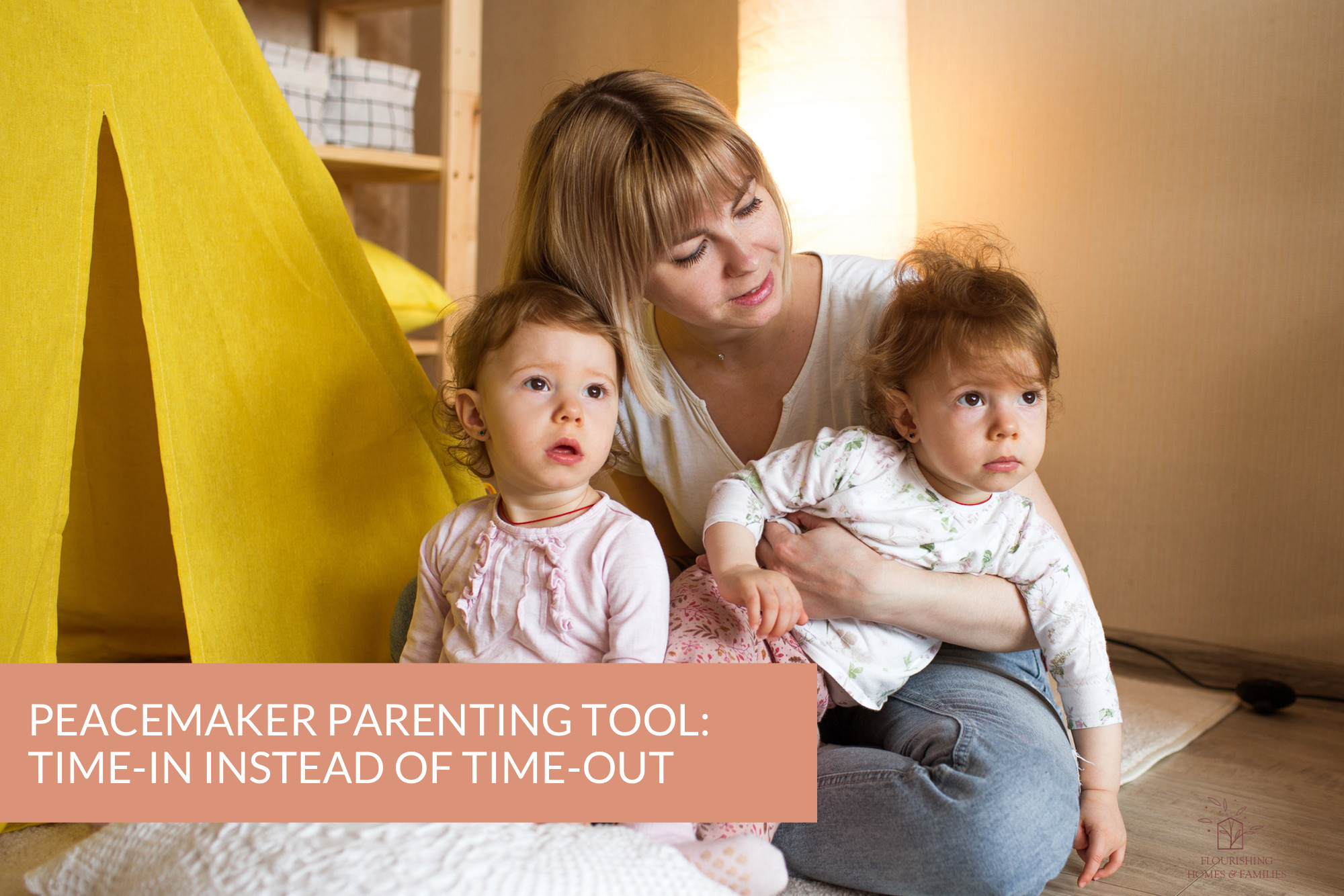
WHAT IS A TIME-IN?
A time-in is an alternative approach to misbehavior, meltdowns, tantrums, and impulsive outbursts that involves guiding your child to a safe space where you can use co-regulation strategies and emotion coaching to help them calm their bodies and process their emotions. This helps children develop emotional intelligence and gives them tools to deal with strong emotions in a healthy and safe way. It also allows them to remain supported while feeling the full range of emotions.
USE A GRACE SPACE (OR CALM DOWN SPACE)
While a time-in can happen anywhere, at any time (because its foundation is a connected and supporting parent-child relationship), creating a Grace Space (or calm down space) at home that is designated for time-ins will help establish rhythm and familiarity for a young child who is learning to regulate emotions. Check out this article on how to create a Grace Space.
REFRAME TIME-OUT
Many peaceful and respectful parenting voices use the term Time-In instead of time out, but we want to give you a helpful analogy that you can use without having to change up your language.
In traditional parenting, time-outs are more like a penalty box in hockey - a penalty or punishment, that leaves a child alone to "think about it". Because parenting as a peacemaker means that we do not withhold our affection, connection, or protection, a time out is more like a time out in football - when the team takes a break to regroup, rest, regulate, and problem-solve. This will look different from family to family (and sometimes even within families moment by moment!). The key is that the parent or caregiver is regulated and able to meet the emotional, physical, and sensory needs of the child so they can learn to regulate as well.

WHY THIS MINDSET MATTERS:
ISOLATION VS. CO-REGULATION
Sending a child to their room or a timeout isolates them for being dysregulated, which is largely outside their control. Their central nervous system learns how to calm down by being in the presence of a calm adult nervous system, a process called coregulation. They may come out of timeout no longer screaming or crying, but their nervous system likely will not have truly calmed down, which keeps them in a cycle of big feelings > bad behavior > time out.
PUNISHMENT VS. DISCIPLINE
Isolating a child for their behavior or immature expressions of feelings punishes them for what they did wrong, but it doesn't teach them how to do better. Discipline requires us to teach (disciple) them and guide them towards maturity. A time-in is essentially a collaborative time-out, and it provides an opportunity to teach a child through difficult situations.
SELF-CENTERED VS. TEAM-CENTERED
Time-out in the form of isolation teaches the child to focus on themselves and their behavior. Approaching timeout as a team-building opportunity (like in football) teaches a child to be aware of the family as a whole, and allows children and caregivers to learn from each other and problem-solve together.
WHAT AGES ARE TIME-INS BEST FOR?
Time-Ins are especially helpful for toddlers and preschoolers due to their under-developed skills of self-regulation. As children enter middle childhood, they will begin to grow their ability and capacity for self-regulation, meaning they will not need the help of a parent or caregiver quite as often. However, neurodiverse children, as well as kids who are still learning how to calm their nervous systems, may need a supportive adult to guide them.
REMEMBER - THE KEY TO AN EFFECTIVE TIME-IN ISN'T A PRETTY SPACE OR HAVING LOTS OF TOOLS, IT IS YOU! So when it's really rough - taking a parent time out is totally okay! You can't help a child learn to regulate if you are dysregulated!

Emotions are an integral part of the human experience, and helping young children understand their emotions is an important part of parenting! By equipping them with emotional intelligence early on, we empower them to navigate life's ups and downs more effectively.
Parenting as a Peacemaker means we look first to Jesus. As both fully God and fully human, He experienced the full range of human emotion. From joy and delight to frustration and anger, from compassion and empathy to grief and anxiety, Jesus reveals to us that emotions are natural, neutral, and necessary.
Why Teach Children About Emotions?
Emotional Regulation: Teaching children to recognize and understand their emotions helps them learn how to manage and regulate them. This skill is essential for maintaining healthy relationships, making thoughtful decisions, and coping with stress.
Improved Communication: When children can express their feelings effectively, it enhances communication with peers and adults. They can better articulate their needs and concerns, reducing frustration and misunderstandings. This also helps mitigate emotional outbursts that become physical.
Empathy: Understanding their emotions also fosters empathy, as children become more attuned to the feelings of others. Empathetic children are more likely to build strong, positive relationships and contribute positively to their communities. Remember, this is something that grows and matures over many years, and is largely dependent on brain development!
Conflict Resolution: Emotional awareness equips children with the tools to resolve conflicts peacefully. They can identify the emotions driving a disagreement and work towards finding solutions that address everyone's needs and concerns.
Practical Activities to Teach Children About Emotions
The Emotion Thermometer: Use a thermometer to help children gauge the intensity of their emotions. This visual aid makes discussing emotions easier and more concrete. Encourage them to point to the temperature that matches how they feel, from icy-cold (calm) to blazing-hot (angry).
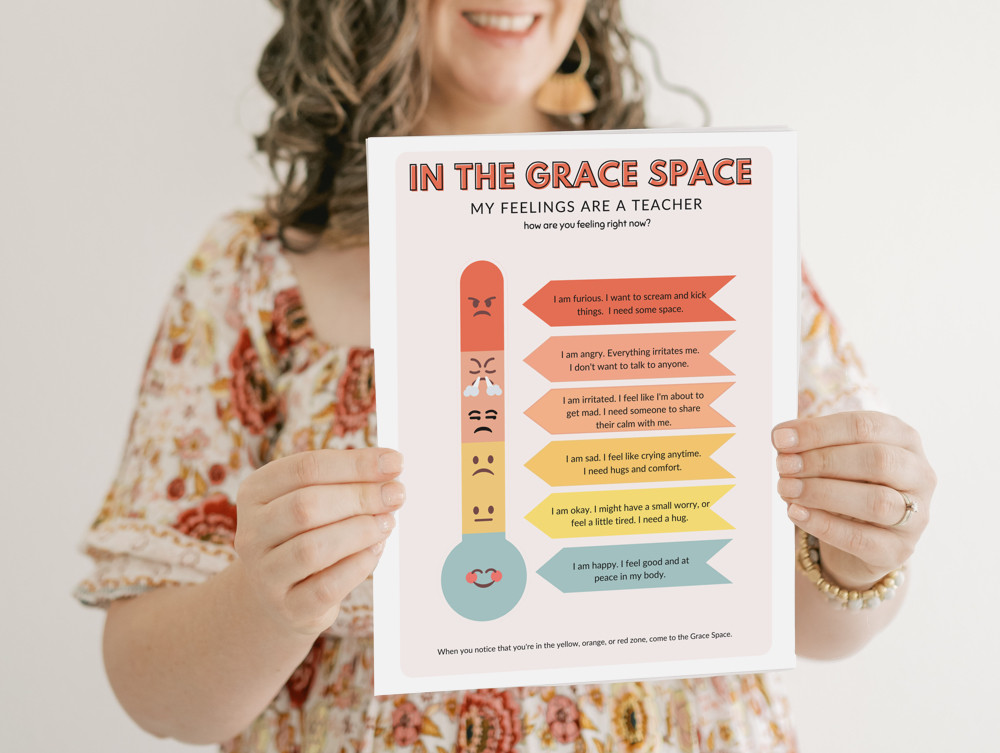
Emotion Charades: Play emotion charades by acting out various emotions without using words. This fun game helps children recognize and express emotions through body language and facial expressions.
Feelings Faces Art: Create a "Feeling Faces" art project. Provide magazines or printouts of different facial expressions and ask children to make a collage of various emotions. This activity encourages discussion about emotions while being creative.
Feelings Flashcards: Craft a set of emotion flashcards with pictures depicting different emotions. Show these cards to children, ask them to identify the emotion, and share a time when they felt that way. This helps them connect emotions to their own experiences.
Books + Stores Read books with emotional themes together. After each story, discuss how the characters felt and why. Encourage children to relate the emotions in the book to their own experiences and feelings.
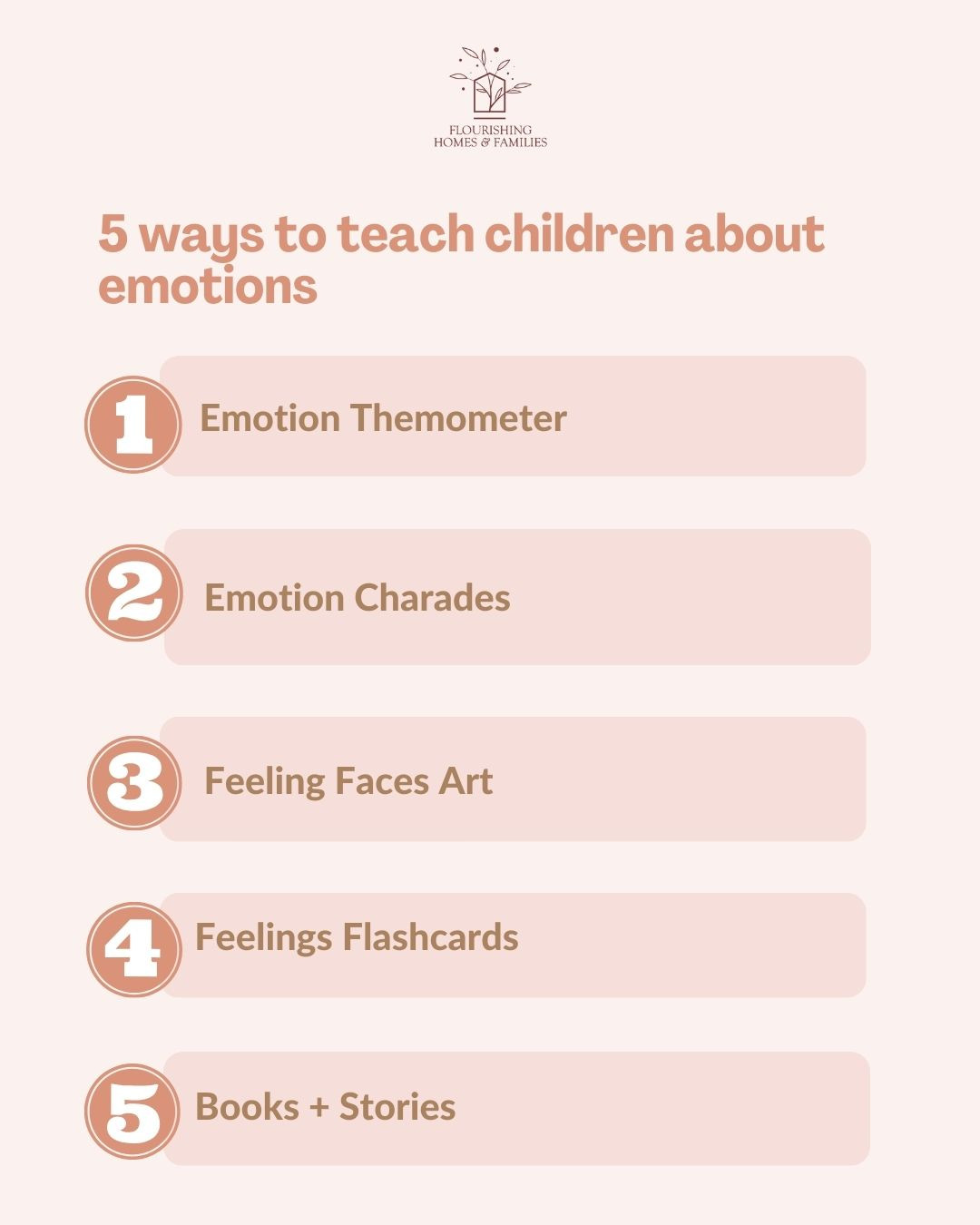
Teaching children about emotions is a sacred journey of nurturing their hearts and souls. It's an opportunity to help them develop not just emotional intelligence but also a deeper understanding of themselves and their place in the world. Just as Jesus embraced and understood the emotions of those He touched, we can guide our children toward emotional maturity with a gentle, Jesus-centered spirit. By doing so, we provide them with a strong foundation for emotional well-being and for living out the teachings of Christ in their daily lives.
In nurturing a child's emotional intelligence, we equip them to better serve others, build lasting relationships, and walk in the light of God's love.
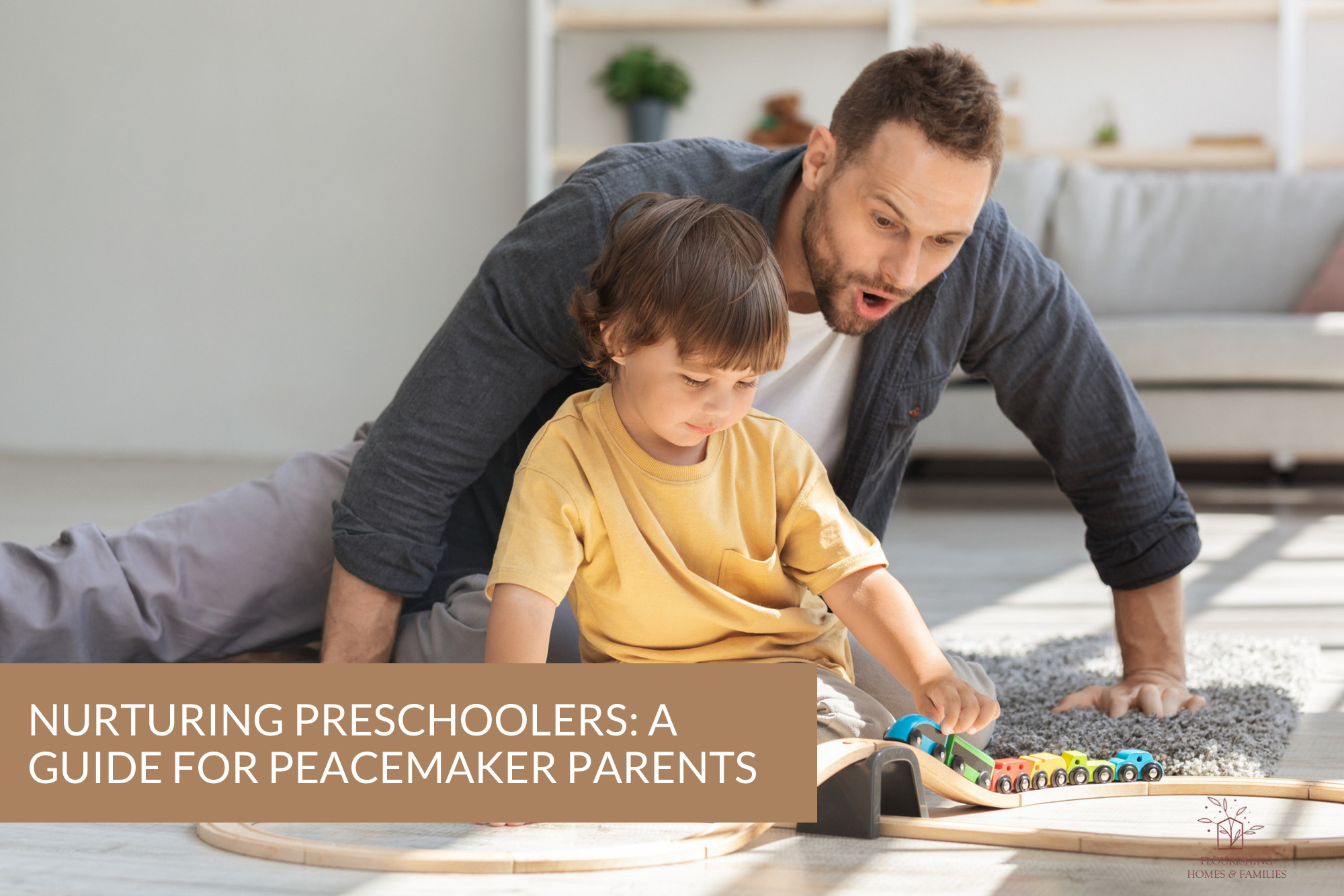
There was a time when the preschool years were affectionately known as the "Wonder Years". And while you might read that and think "Of course they were - I'm always wondering what the right thing to do is with my preschooler," the term Wonder Years was actually coined as a nod to the inherent wonder and curiosity of 3, 4, 5, and 6-year-olds.
The preschool years are typically defined as ages 3.5-5.5. It's during this phase that children start developing a sense of self, and though they're still very dependent on parents and caregivers for the meeting of physical and emotional needs, they're also extremely interested in learning about their own independence. They learn through experience, and exploring their world, testing limits and boundaries, and discovering new skills are full of wonder and excitement.
As you embark on this beautiful journey of raising preschoolers, here are a few things your preschooler needs to thrive:
Unconditional Love and Protection
- Parenting as a Peacemaker means we start by understanding that receiving and accepting God's unconditional love for you so that you can extend that kind of resplendent love to your preschooler. Let them know they are loved and cherished, and nothing they do will change that.
- Encourage open communication and assure them that they can always talk to you about anything.
Respect for Individuality
- Recognize that each child is unique and created in God's image. Embrace and celebrate their individuality.
- Encourage their interests and passions, even if they differ from your own. One very practical way to do this is to show genuine interest in what they delight in, get curious about it, and join them in that interest.
Peacemaker Discipline (Discipline as Discipleship)
- Shift from punishment-based discipline to a peacemaking approach rooted in Jesus-centered discipleship.
- Discipline with love, empowering your preschooler for the future by teaching and building skills, reinforcing family values, and scaffolding their learning.
Structured Routine with Flexibility
- Establish a daily routine that provides stability and security for your preschooler.
- Allow room for flexibility to accommodate their changing needs and interests, as well as to meet the needs of each family member.
Connection + Quality Time
- Prioritize spending quality time with your child. Engage in activities that promote bonding and connection.
- Try to engage in 10 minutes of child-led play or activity every day.
Age-appropriate Independence
- Foster independence by giving your child age-appropriate responsibilities and choices.
- Teach them to make decisions by giving choices within wide boundaries.
Emotional Regulation
- Help your preschooler start learning to identify and express their emotions in healthy ways.
- Remember that co-regulation is the foundation for self-regulation. Your child's nervous system will learn self-regulation by experiencing it with you.
Free time for Curiosity and Learning
- Support their natural curiosity through exploration and play.
- Build unscheduled and unstructured free time into your day so they have time to pursue their own curiosity.
You have a unique opportunity to raise thriving preschoolers who not only grow in wisdom and grace but also understand the depth of God's love for them as His image bearers. Parenting through the "wonder years" can feel overwhelming at times. Don't forget to sit back and watch your child flourish as they journey through the precious years of preschool, being exactly who God made them to be.
Want to learn more about Peacemaker Parenting Preschoolers? Our upcoming LIVE workshop will fill your parenting toolbox with trust-based, peacemaking parenting tools, especially for the preschool years.
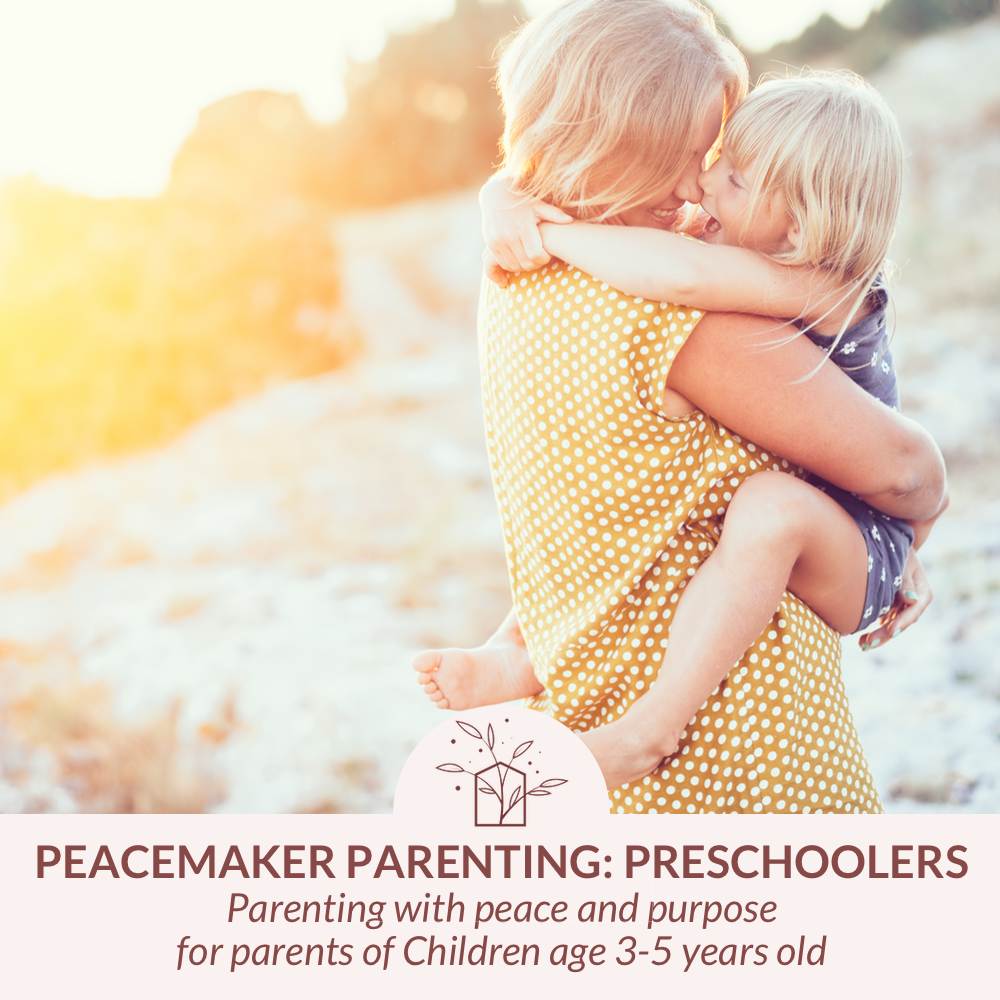
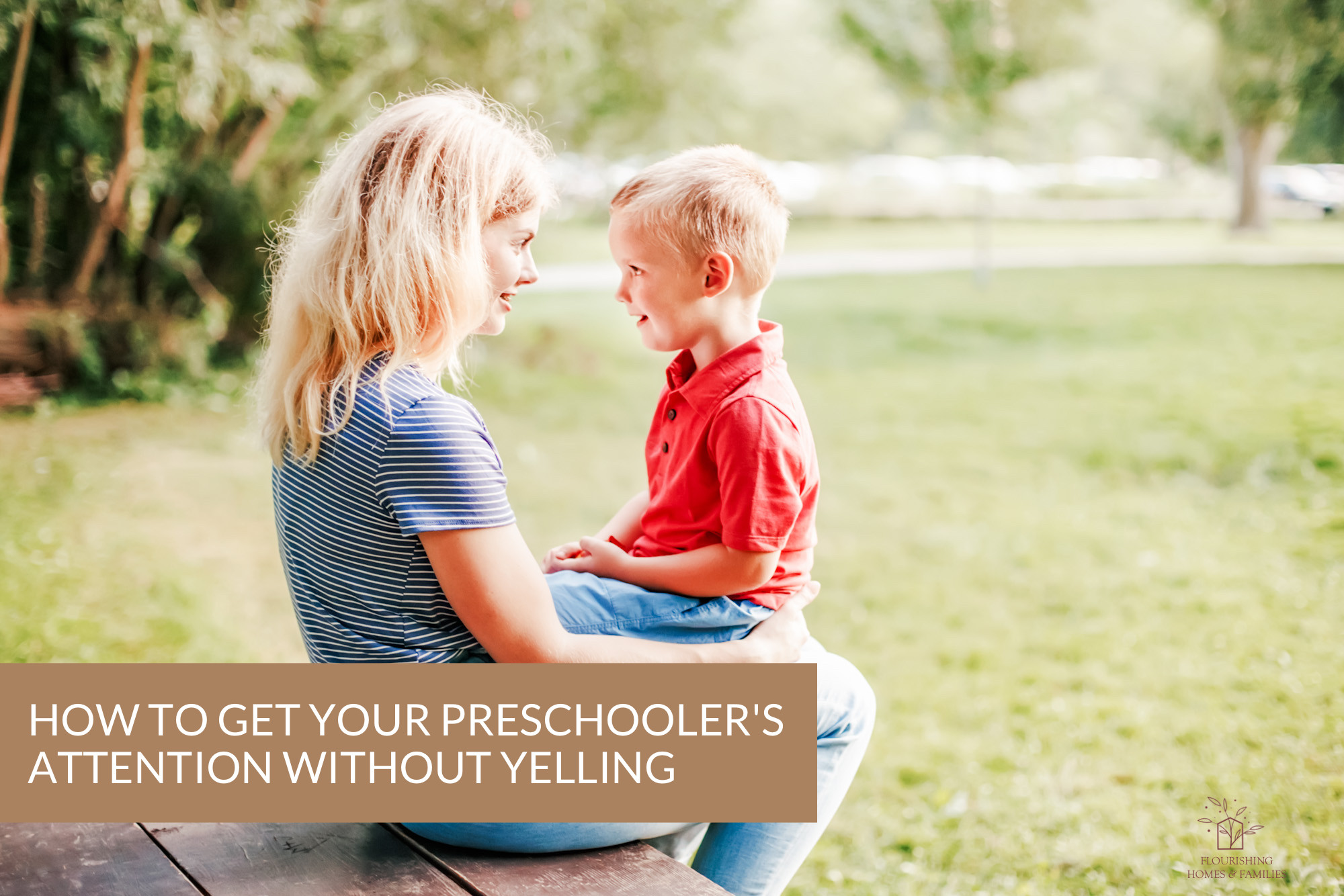
No one really wants to have to yell at their kids to get their attention, right? The thing is, children's brains transition much more slowly than adult brains do, which means even if they hear you talking, you don't necessarily have their attention. Here are four easy ways to get their attention without yelling, while also building connection and strengthening your bond with your child.
1. Be silly
Getting down on their level and being silly and playful invites them from their world of fun and imagination and into your world of fun.
- "I can't remember, are your eyes purple? Do you have purple eyes? Can I see them?"
- "Are my eyes opened or closed?" (Then keep one eye open and one eye closed like you're winking at them.)
- "My tongue! It's stuck out! I can't get it back in! I need some one to poke my tummy so my tongue will pop back in my mouth!"
2. Be curious
When you take time to notice what they're engaged in or mention something you admire or love about what they're doing, it gently shifts their focus to you.
- "I see you're coloring a rainbow. It looks like you used all of the colors and made it really big and bright. What is your favorite thing about this picture?"
- "It looks like you're having fun playing with your Paw Patrol toys. What kind of adventure are they on?"
3. Gently touch their shoulder, cheek, or chin
Getting down at eye level or lower disarms children and helps them instinctively know that you are not there for a power struggle or to control them. Gently touch their shoulder, cheek, leg, or chin to get their attention while asking a question about the activity they're engaged in. "You're paying really close attention to this LEGO project. What are you building?
4. Sing or whisper
If you need their attention right away, and can't get close to them, try singing their name or even whispering if you're close enough that they'll hear it. This is a low-pressure way to get their attention and help draw them to you.
5. Instead of counting to three, have them count
Many parents use the 1...2...3... method to get their children to listen or obey. Instead of counting to get your child's attention, help them access the logical and problem-solving parts of their brain by inviting them to count.
- "How many fingers am I holding up?" (If they answer and then look away quickly, do it again, or quickly change how many fingers you're holding up so they pay closer attention.)
Children can easily get lost in their own imaginative world and focused on their own agenda - and that's a good thing, it's one of the things we love about them! As a Peacemaker Parent, you can gain their attention without getting harsh or yelling, and draw them back into a trusting, safe, and peaceful "real world."
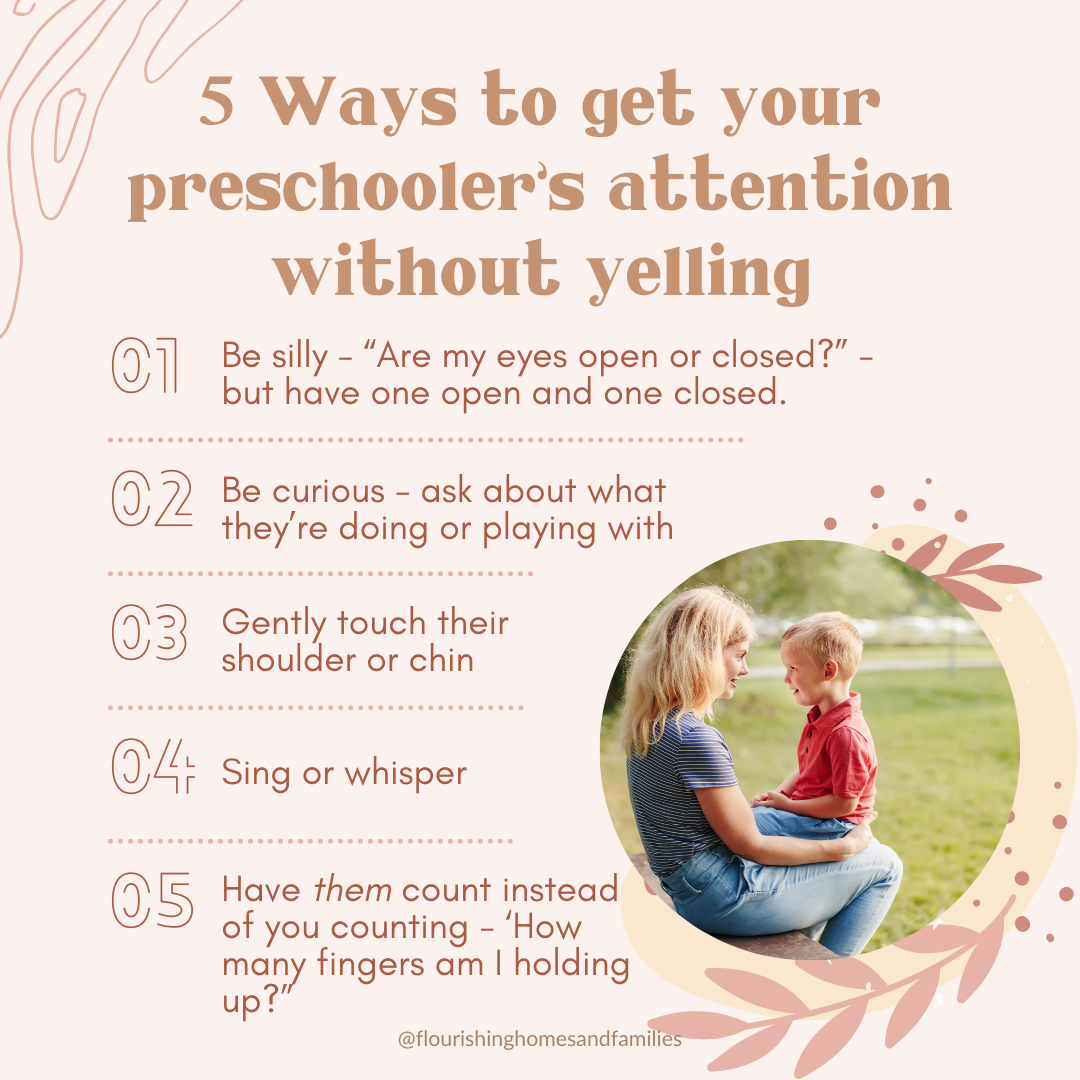
Want to learn more about Peacemaker Parenting Preschoolers? Our upcoming LIVE workshop will fill your parenting toolbox with trust-based, peacemaking parenting tools, especially for the preschool years.
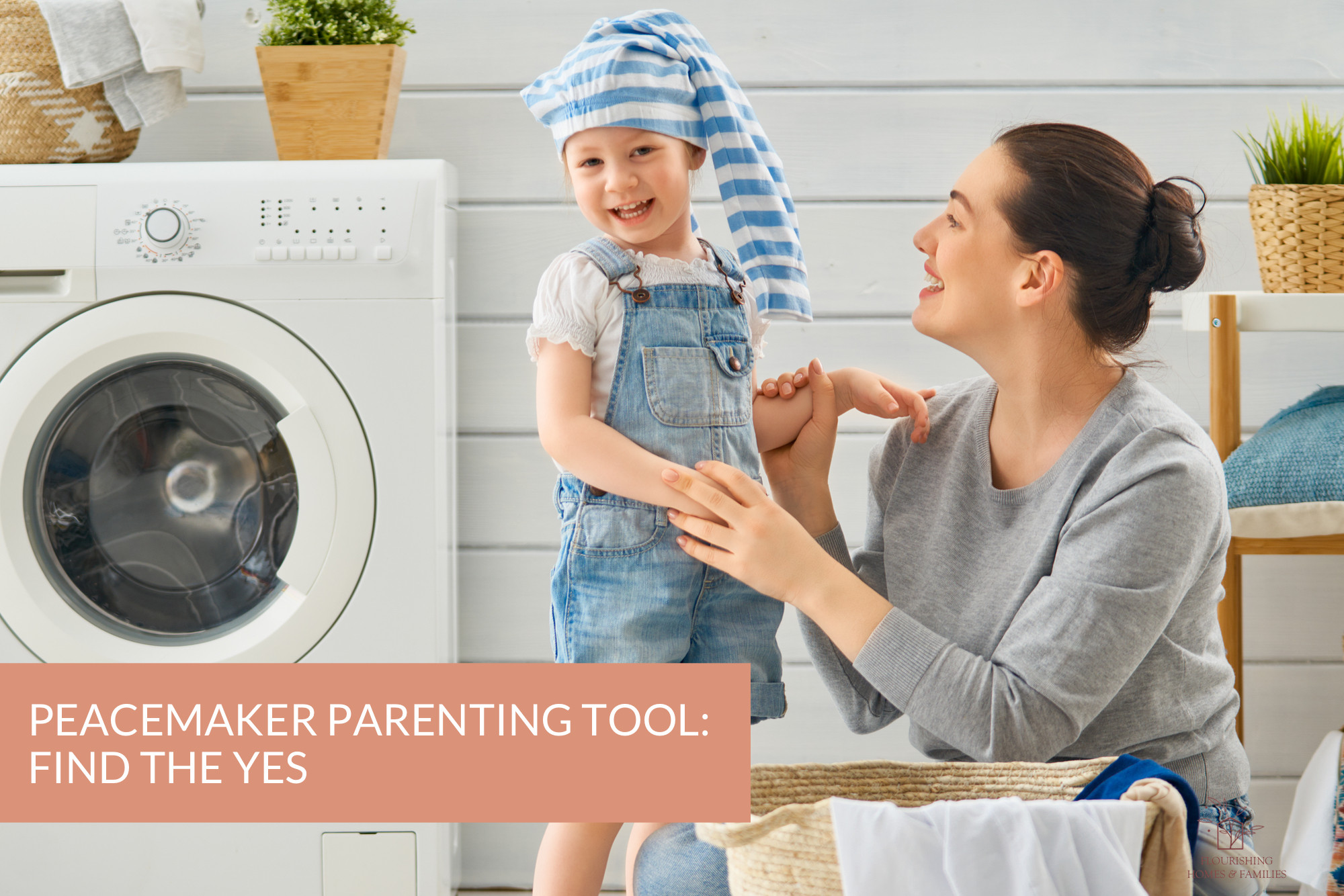
In the fast-paced world of parenting, it's easy to find ourselves uttering those familiar words: "No," "Don't," and "Stop." But did you know that these seemingly harmless words can trigger a cascade of stress-inducing reactions in both your child's developing brain and your own? In this blog post, we'll explore the power of "yes" and why telling children what to do, rather what not to do, can be a game-changer in cultivating harmony in your home.
THE SCIENCE BEHIND "NO"
When we constantly resort to "no," we unwittingly release a slew of stress-producing hormones and neurotransmitters in both our children's and our own brains. These chemicals can immediately interrupt crucial brain functions, leading to diminished logic, reason, language processing, and communication. To make matters worse, a disapproving frown when saying "no" can release even more stress hormones, contributing to increased anxiety and irritability. Ultimately, this can undermine the precious bonds of connection and trust between you and your child, which ultimately can result in more power struggles!
THE SCIENCE BEHIND "YES"
Of course, we're not suggesting that you should never say "no" to your child; that's simply unrealistic. No is a complete sentence and children do need to learn it! (Though you may have noticed your young child has most definitely learned the power of "no!" and you hear it quite often!)
Rather than relying on "no", we suggest a powerful alternative: the art of finding the "yes" and telling your little ones what to do rather than what not to do.
Here are some practical examples to illustrate the shift:
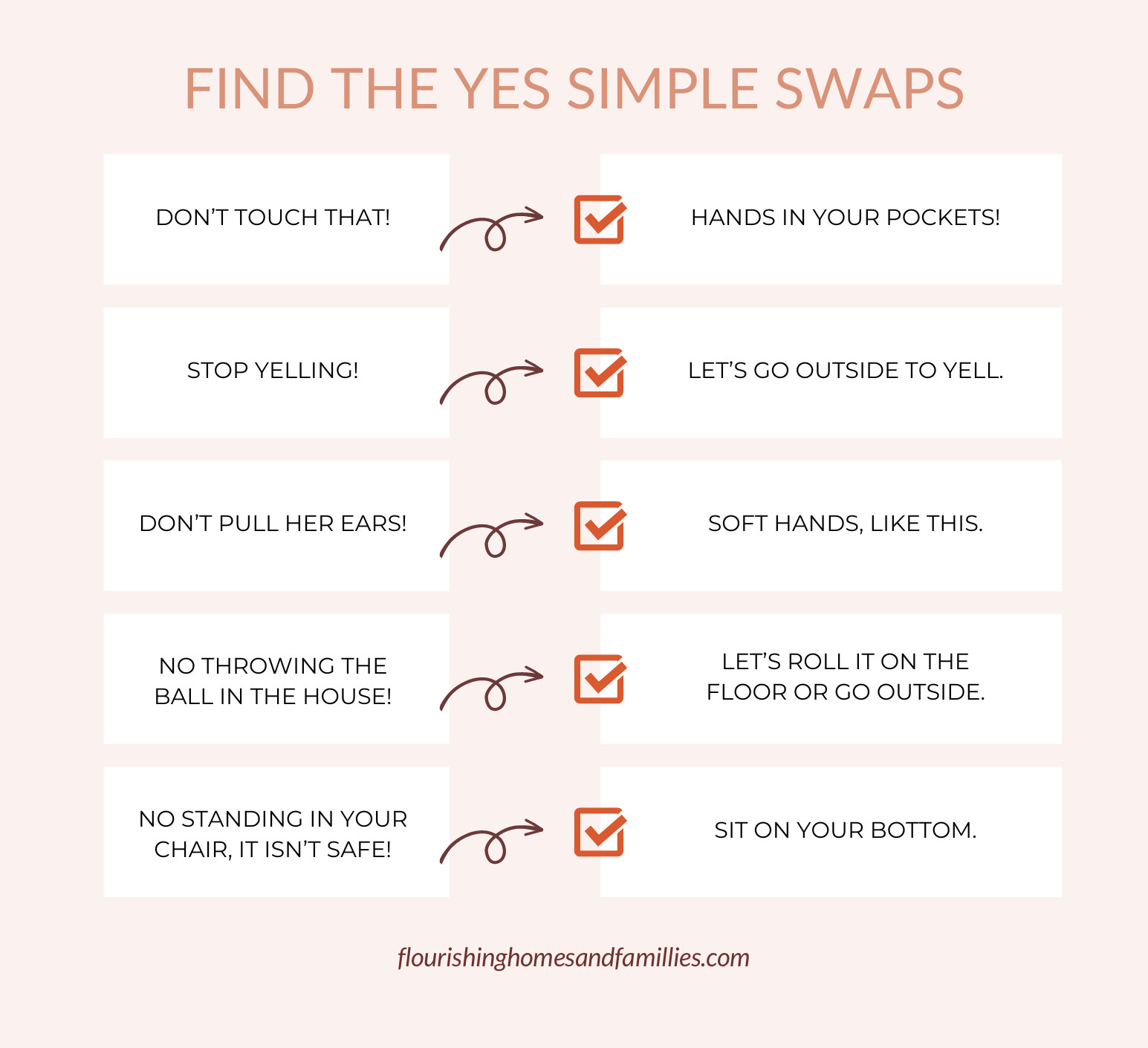
THE PATH TO PARENTING AS A PEACEMAKER
"Find The Yes" is just one of the valuable tools we're excited to share in our upcoming Peacemaker Parenting Preschoolers workshop this month. If you're THE parent of a 3-5 year old who is seeking to parent with peace and purpose while breaking generational cycles of harsh parenting and physical punishment, this workshop is designed specifically for you.



